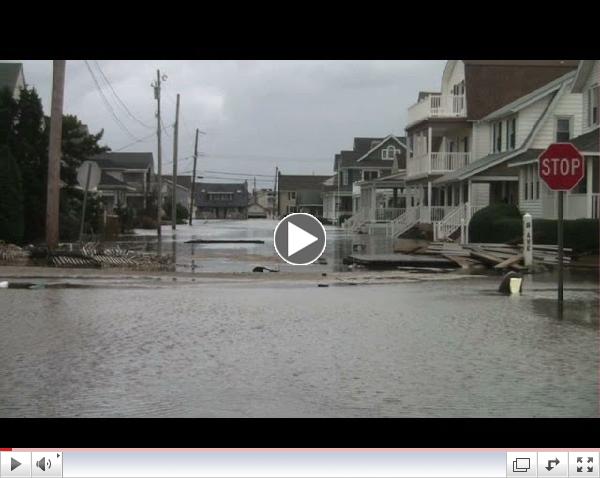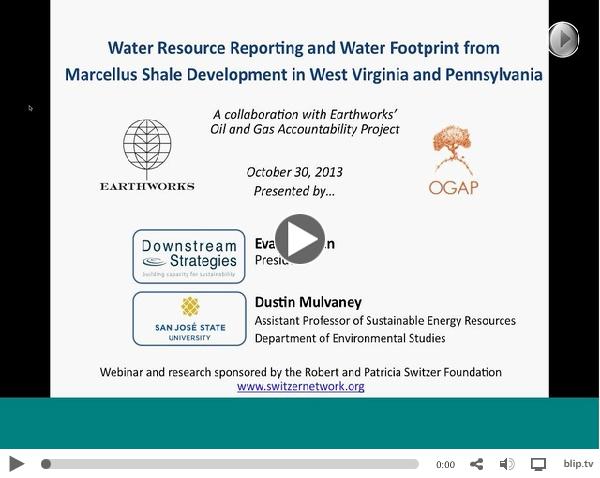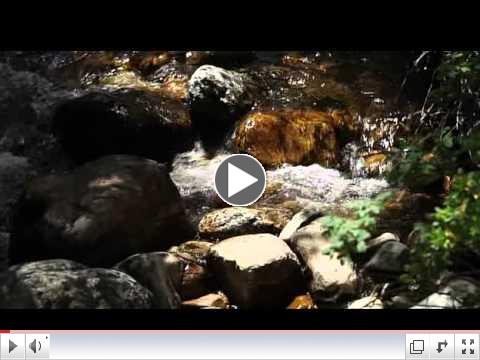|
|
|
P rotecting Communities and Special Places rotecting Communities and Special Places
|
|
e-Newsletter November 1 , 2013
|
|
|

 "Water - is everything" "Water - is everything"
~ Erin Brockovich,
Last Call at the Oasis
|
|
|
Save the Date!
The next Keep It Wild
Hike is
Sunday
November 10
Watch for details next week!
www.keepitwildrda.org
---------------------------------
|
|
Shale Drilling and Public Health:
A Day of Discovery
Saturday,
November 23, 2013
9 a.m. to 5 p.m.
Heinz History Center, 1212 Smallman Street Pittsburgh PA 15222 (5th Floor)
This conference/health fair features nationally known experts including Dr. Anthony Ingraffea and Dr. Michelle Bamberger, DVM, presenting the latest research about shale gas extraction and public health, plus interactive exhibits.
Sponsored by the League of Women Voters of Pennsylvania
FREE but you must register to attend.
Register here or call 1-800-61-SHALE (800-617-4253
|

The Great March for Climate ActionThe goal of the Great March for Climate Action is to change the heart and mind of the American people, our elected leaders and people across the world into acting now to address the climate crisis.
It will be coming through Ohio and Pennsylvania
October 4 though October 27, 2014. It steps off from Los Angeles, CA on
March 1, 2014.
So if you think you want to march the entire way it's time to start getting in shape. If you think you can march part of the way or can provide local support to the marchers, then take a look at when and where it will be coming near where we live.
|
 TAKE ACTION!
|
Help Protect the Loyalsock State Forest!Rep. Greg Vitali intends to introduce a Resolution, HR 500,
that would urge Governor Corbett to do everything in his power to prevent drilling operations from occurring on the Clarence Moore tracts in the Loyalsock State Forest.
The 25,621 acre Clarence Moore Tract is currently under the threat of unconventional gas development by Anadarko Petroleum Corporation. This development would degrade the environmental and recreational value of the land. Call, send an email, or send a letter to urge Rep. Garth Everett and other members of the General Assembly to cosponsor this important resolution!Find contact information here for Rep. EverettFind other Representative information here |
 IN THE NEWS
|
|
From the Delaware Riverkeeper
Shale Truth series Hurricane Sandy Anniversary Climate Change question
Dr. Anthony Ingraffea returns to shed some light on the question. Once again, he contends that people are having the wrong debate: there is no way to tell whether or not Hurricane Sandy was specifically cause by global climate change. However, it's undeniable that storms like Sandy will be increasingly common with a changing, unstable climate.
 | | Shale Truth series Ingraffea Hurricane Sandy Anniversary Climate Change question |
--------------------------------
|
|
Pennsylvania
River of the Year
The Pennsylvania Organization for Watersheds and Rivers is accepting nominations for Pennsylvania River of the Year through November 14.
Why not nominate your favorite river today?
----------------------------------
|
We welcome your active participation and are in
need of help for special events, publicity, research, and other projects.
Contact us for details.
As a 501(c)(3)
non-profit
organization, RDA
relies on donations
for the important work we do. In order for
RDA to continue its valuable education
and advocacy
outreach in 2013, please consider
a tax-free contribution
to our efforts.
|
|
 The Water-Energy Nexus The Water-Energy Nexus By ANN PINCA
Approximately 70 percent of the Earth's surface is covered with water, yet only one percent of that is fresh water we need to survive. Recycled over and over, the water we have today is about the same amount as when Earth was formed. We will never get more water on Earth than what we have now.
Small wonder, then, that there is great concern over water when it comes to energy production. Last September, RDA presented information from a report exploring the relationship between water and energy production in terms of volume requirements, water quality, and a lack of data on water use and future availability.  - Surface water taken directly from rivers and streams makes up over 80 percent of the water used in hydraulic fracturing and is by far the largest source of water for operators.
- In Pennsylvania, an average of 4.3 million gallons of fluid are injected per fractured well; in West Virginia the average is 5 million gallons, with a larger majority of the water remaining underground than previously thought.
- As Marcellus development has expanded, waste generation has increased. In Pennsylvania, operators reported an almost 70 percent increase in waste generated between 2010 and 2011.
The report summarizes that the volumes of water used to fracture Marcellus Shale gas wells are substantial and the quantities of waste generated are significant. With other areas of our nation experiencing droughts and severe water shortages, the report suggests that "removal of water from the hydrologic cycle is an impact worth considering and mitigating," even in water-rich states like Pennsylvania and West Virginia.
Additionally, the question of how to appropriately handle increased amounts of waste water that will come with expanded drilling will need to be addressed. This is perhaps especially important in view of the current lawsuit filed against a waste water treatment plant along the Allegheny River.
According the U.S. Department of Agriculture, U.S. citizens use approximately 25 trillion gallons of fresh water each year, and we are using our fresh water faster then we are recharging our groundwater. The use of our most precious resource, water, must be carefully managed for all needs, now and for the future.

Webinar: Reporting from the Fracking Front
If webinar box is not visible, click here to access the
presentation highlighting the report.
|
|
 Last Call At The Oasis Last Call At The OasisExplore the many issues swirling around water in this excellent 2012 documentary, Last Call At The Oasis, divided into approximately 15 minute segments. From water shortages to contamination, this film provides a compelling look at the problems with water in today's world. Be sure to watch Part 3 and Part 4, which feature legendary Erin Brockovich as she works with a community in Midland, Texas.
 | |
Last Call At The Oasis Part 1
|
|
|
 Water Data Critical to Make Informed Energy Decisions
By GRANT SMITH Senior Energy Policy Analyst Civil Society InstituteIn surveying the energy landscape, there's an emerging, inevitable trend. Old coal and nuclear plants are being decommissioned while new ones are extremely difficult to keep within estimated construction budgets. Age and cost have caught up to the old plants. For the new, there's not much good news. The Edwardsport coal gasification plant in Indiana, the Prairie State coal supercritical plant in Illinois, and the carbon capture demonstration project in Mississippi all suffer from cost overruns and/or scandal. The new nuclear units at the Vogtle plant are suffering the same cost-overrun issues.
Financially, it's all over for coal and nuclear. Bringing up the rear in the
demise of the 20th Century energy paradigm are natural gas-fired plants. Where renewables begin to dominate the market, as in Germany, their ability to make money wanes. The promise of small, modular technology will prove equally elusive as massive public subsidies will be needed to support the manufacturing supply chain in order to have any hope of bringing down the kilowatt price.

The next nail in the coffin for these passť technologies is water. The water/energy nexus, as it is known, is a big deal. Well, not publicly, but internally among federal agencies. In a response to a letter sent recently to the Department of Energy (DOE), the DOE "assures" the Boise, Idaho-based Snake River Alliance "that the Department recognizes the significance of interdependencies between water and energy." The US Geological Survey wrote this year, "the Nation faces an increasingly large set of water-resource challenges as water shortages and water-use conflicts become more commonplace."
The Department of Defense considers climate change and water as national security issues. Its response to the water/energy/climate nexus? Building efficiency, renewables, and microgrids at military bases. In other words, there's essentially consensus among federal agency analysts that the challenges posed by the water/energy nexus are here to stay and will become more severe.
The water/energy nexus doesn't stop with power generation. Extraction industries like coal and natural gas also use voluminous amounts of water. The end results have been extensive water use and pollution and public health impacts caused by fracking and coal mining. In one instance, fracking actually ran dry the water supply of a small Texas town.
Conflicts over water are increasing. There's the growing competition between fracking firms and the agriculture sector in Colorado, not to mention the law suit to prevent a planned nuclear plant from securing water rights in Utah.
Then there's extended drought and heat waves that have impacted the operation of thermoelectric plants in Texas, North Carolina, Wyoming, and in Long Island Sound over the last few years.
The bottom line is that the 20th Century electric power mix and its attendant fuel cycles withdraw and consume enormous amounts of water that we can ill afford to squander. But we have the technology now to replace a large portion of the old electric grid. There's the rub. This is why such a front burner issue isn't consistently before the public. The water/energy nexus puts a significant crimp in the President's and Congress' all-of-the-above strategy for energy development.
The DOE and Office of Management and Budget under Presidents Bush and Obama buried a report mandated by Congress to create a Water/Energy Roadmap for the country. The USGS is no longer releasing its water use survey historically published every 5 years.
The research from the water/energy nexus is simply missing and we need to push that information into the public domain. We also need to adequately fund the USGS analysis of aquifers. More detailed information is important. But constantly studying the issue or setting up bureaucratic methods for internal discussion is the equivalent of fiddling while Rome burns, particularly when there's consensus among federal agencies and we have the technology to act now.
There's no question. Water/energy nexus issue is a hot potato. But instead of exhibiting true leadership on the issue our elected officials in Washington DC are playing it politically safe. They prefer not to rock the boat, instead of calling for real change that begins with the phase out of thermoelectric power over time while ramping up investments in sustainable efficiency, renewables, distributed power and storage technologies that would substantially relieve the pressures on water supply we now face.
| |
|
 Loyalsock State Forest News Loyalsock State Forest News Pennsylvania's revolving door took another turn this week when Brian Grove was named as the Department of Conservation and Natural Resources (DCNR) new Deputy Secretary for Administration. A former Chesapeake Energy executive, Grove served as Senior Director of Corporate Development until he was let go during Chesapeake's recent round of lay-offs. According to the DCNR's announcement, Grove's responsibilities will include providing direction and oversight to the bureaus of Administrative Services, Human Resources and Information Technology Services. Let's hope in his work with IT that he keeps track of all those messages that go in to loyalsock@pa.gov. And speaking of loyalsock@pa.gov, Dan Devlin, State Forester and Director of the Bureau of Forestry and now acting Deputy Secretary for Parks and Forestry, provided a letter that details the emails the DCNR received from concerned citizens. This information  can also be found on the DCNR web site here. Devlin's letter also said there was no status change at this point since, in keeping with the report in last weekend's Sun-Gazette article, the DCNR has not been in conversation with Anadarko or Southwestern Energy, the other mineral rights lessee. The Forest Coalition suggests you keep those loyalsock@pa.gov emails going, but this time copy your State Senator and Representative when you send your message - and ask specific questions, too. Let them know why you want to keep the Clarence Moore lands wild!
|
|
RDA Newsletter 
Ann Pinca, managing editor
Ted Stroter, RDA Board of Directors editor
Ralph Kisberg, contributing editor
Robbie Cross, President - RDA Board of Directors
Jenni Slotterback, Secretary - RDA Board of Directors
Barb Jarmoska, Treasurer - RDA Board of Directors
Mark Szybist - RDA Board of Directors
Roscoe McCloskey - RDA Board of Directors
This weekly e-letter is written and designed by the RDA consultants and Board of Directors and sent to RDA members/subscribers. Every effort is made to assure complete accuracy in each issue. This publication and the information contained herein is copyrighted by RDA and Ann Pinca and may not be reproduced without permission.
All rights reserved. Readers are invited to forward this newsletter in its entirety to broaden the scope of its outreach. Readers are also invited to comment to the managing editor regarding contents and to submit articles to be considered for publication in a future issue.
Please note: The RDA newsletter includes reporting on a variety of events and activities, which do not necessarily reflect the philosophy of the organization. RDA practices only non-violent action in voicing the organization's beliefs and concerns.
|
|
|
|
Donations may also be sent by mail to: Responsible Drilling Alliance, P.O. Box 502, Williamsport, PA 17703
Thank you for your support!
|
|
|
|
|
|
|